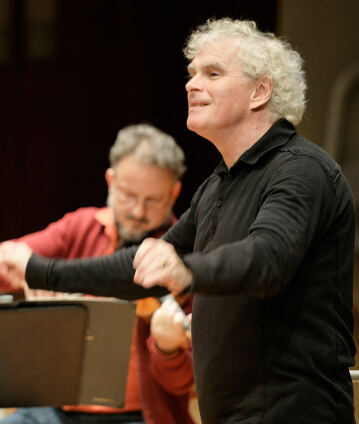Simon Rattle rehearses “Le Sacre du Printemps”

Simon Rattle has conducted Stravinsky’s archaic and powerful ballet music Le Sacre du printemps with the Berliner Philharmoniker on several occasions. One highlight of these performances was an education project in 2003 in which over 250 young people performed a dance version, and which was documented in the internationally acclaimed film Rhythm Is It!. This recording shows the final orchestral rehearsal, with the young dancers in the auditorium.
Sir Simon Rattle once described Stravinsky’s Le Sacre du printemps as “prehistoric jazz”. The archaic and the modern do indeed come together in this composition, written as a ballet score, but long established in the concert hall as symphonic music. The action of the ballet takes place in “prehistoric” times: various tribes gather to select a sacrifice for the upcoming spring. In the end, a young girl dances herself ecstatically to death.
The elemental power – even violence – of the subject is clear in Stravinsky’s music in moments in which the entire orchestra seems to transform itself into a single rhythm machine. There are also subtle uses of Russian folk tunes which bear no resemblance to cosy folklore. Polytonal and polyrhythmic passages in which different harmonic or time structures are layered on top of each other are particularly trendsetting. The Sacre is a unique document of early musical modernism mainly because it freed rhythm from the corset of regular measures with a symmetrical beat. Its shocking modernity remains to this day.
© 2004 Boomtown
Artists
Our recommendations
- Dance project: “Carmen”
- Simon Rattle conducts “Tosca”
- The Berliner Philharmoniker, Simon Rattle and Karita Mattila at the “Proms”
- Simon Rattle conducts the first live concert of the Digital Concert Hall
- Simon Rattle conducts Haydn and Stravinsky
- Simon Rattle conducts Mahler’s Ninth Symphony in Taiwan